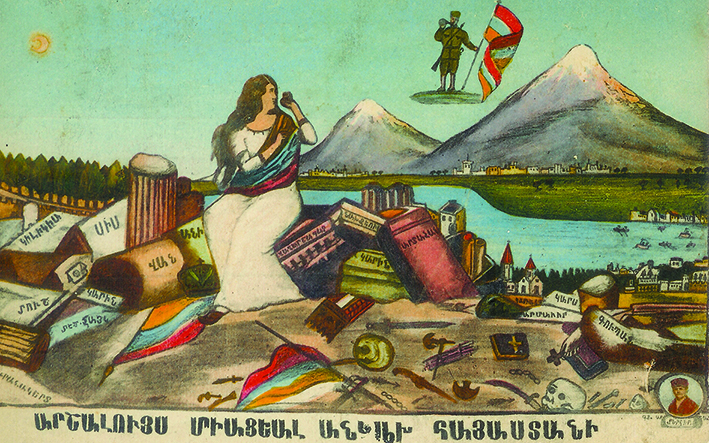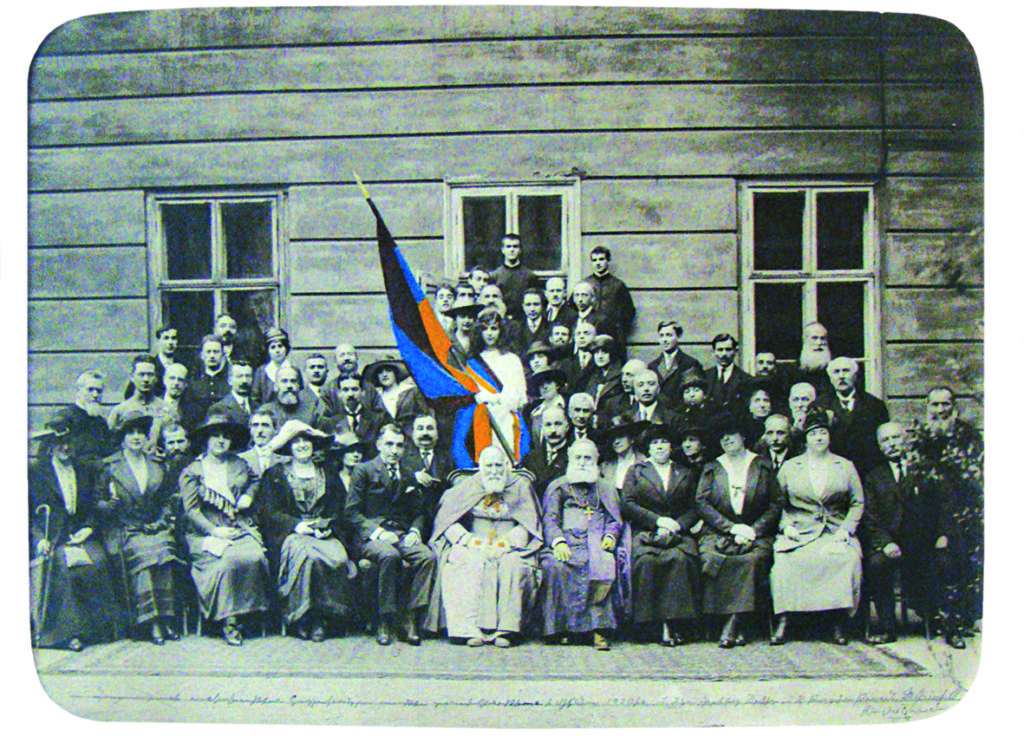From the Armenian Weekly 2018 Magazine Dedicated to the Centennial of the First Republic of Armenia

The establishment of the First Armenian Republic took place at one of the most crucial periods of the Armenian nation’s history. Having just suffered genocide, and in the midst of a humanitarian crisis, the Armenian people and its leaders were forced to confront a massive new challenge—in the form Ottoman-Turkish Army advancing toward Yerevan.

Armenia” in Armenian (Postcard: ARF Archives)
The crucial battles at Sardarabad, Bash-Abaran, and Gharakilisa in May 1918 stopped the advance of the Ottoman forces and pushed them back, thus creating a safe haven for both the survivors of the Genocide and for the Russian Armenians in Yerevan and surrounding territories. Both populations were in desperate straits after the fall of czarist regime in Russia and the subsequent political and military chaos in the Caucasus. Heroic Armenian resistance and Turkish defeat resulted in the opportunity for Armenian leaders to proclaim an independent Armenian Republic after similar proclamations by the Georgians and Azerbaijani Turks.
After the defeat and withdrawal of the Ottoman Army from the Caucasus, a relatively calm period ensued, helping to foster state-building and the strengthening of the Armenian Army. Despite all odds and numerous hardships, the leadership of newly created republic, along with Armenian communities worldwide, celebrated the establishment of Armenian statehood.
As one might imagine, creating a festive atmosphere in a newly independent state overwhelmed with refugees and a population on its last legs was extremely difficult. And though Armenia and the Diaspora celebrated the first two anniversaries of the independent Republic, after its Sovietization the people of Armenia no longer could, for decades thereafter.
Some unique memorabilia of the First Republic period, as well as photographs showing the parades and other celebrations that took place in Armenia, have survived. One of those interesting photos was taken on May 28, 1920, when Armenia was proclaimed “United and Independent.” The procession on the central Astafian (now Abovyan) Street in Yerevan, the capital of the hunger- and war-stricken republic, featured two floats and rows of Armenian soldiers on one side of the street and rows of orphans on the other. Among the flags representing the diplomatic and military missions in Armenia, the US flag is visible. The woman standing in the front car is dressed in black, symbolizing the past and suffering of Armenia, while another, younger woman dressed in white stands on the other car, symbolizing the future and national rebirth of Armenia, with two children at her side. The children, holding hands, are dressed as Turkish and Russian Armenians. Posters surround “New Armenia” bearing the names of the cities and regions of Armenia, such as Van, Mush, Ani, and Tigranakert.

Another fascinating photograph depicts a triumphal arch in Yerevan, on Astafian Street, crowned with the coat of arms of the new republic, and HH-Hayastani Hanrapetutiun (RA – Republic of Armenia) and Ketseh Miatsial yev Ankakh Hayastanuh (Long Live United and Independent Armenia) written on either side. Armenian army detachments would have paraded through that arch.

A photograph preserved at the Mekhitarist Monastery in Vienna depicts Mekhitarist clergymen with a young lady holding an Armenian tricolor. The flag used during the same celebration is displayed in the congregation’s museum.

Rare memorabilia—posters, anniversary programs, fundraising receipts, and other rare glimpses into the First Republic—continue to be preserved in museums and private collections, giving us an important understanding of the mood and sacrifices our people in those crucial years.
The postcards and various ephemera of the time bore images of Mother Armenia as a seated, mourning woman amid the ruins of Armenia. Today, she has become a young heroine calling for struggle and the revival of a nation.
Author information
The post Demoyan: Celebrating the Republic appeared first on The Armenian Weekly.
Source: Armenian Weekly
Link: Demoyan: Celebrating the Republic
